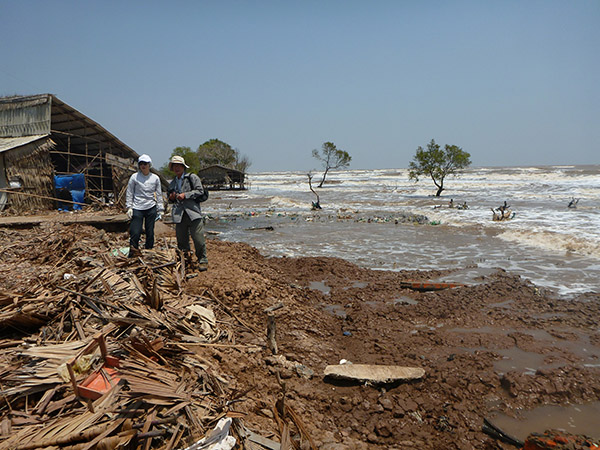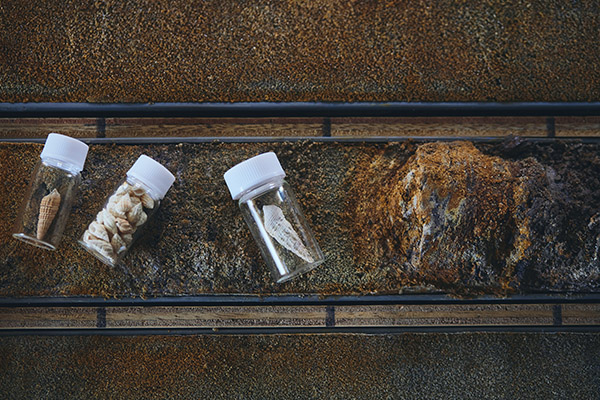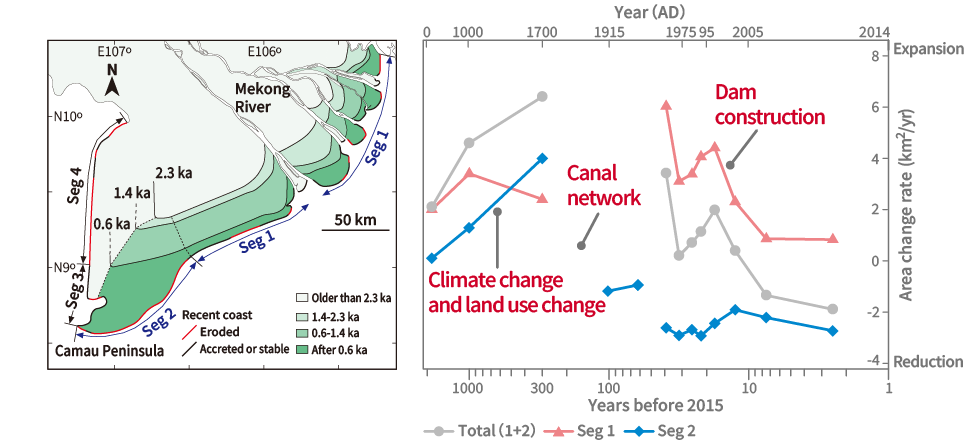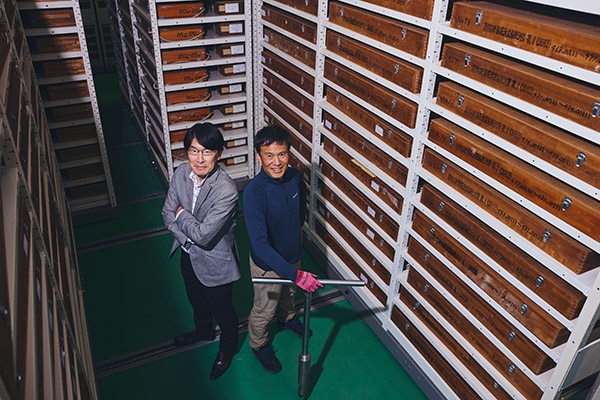Key Point
Geology is the key to solving future problems by unraveling the Earth's past environment. The Mekong Delta spreads out at the mouth of the Mekong River in southern Vietnam. Coastal erosion is becoming more severe, causing coastal villages to disappear and farmland to flood. While measures are urgently needed, research using geological dating technology has revealed the process of the formation and erosion of the Mekong Delta.
We interviewed Chief Senior Researcher Tamura Toru of the Paleogeodynamics Research Group, Research Institute of Geology and Geoinformation, who received the AIST Paper Award for this research.
What makes this research amazingSelected as one of the top 100 earth science papers of 2020 by the scientific journal Scientific Reports!
The paper has been cited in various fields and has attracted attention, including invited lectures.
What do you think is the reason your paper has been cited across a wide range of fields, including not only geology but also civil engineering, fisheries, and environmental science?
Tamura“The Mekong River is one of the world's largest rivers, flowing through six countries, and the Mekong Delta is the product of the long-term sediment supply from the river. This area is strongly affected by human activity and environmental changes, such as the development in the upstream areas and a sea level rise due to the global warming. It is thus attracting worldwide attention as one of the most vulnerable regions on the planet.
 A village lost after coastal erosion near the mouth of the Mekong River.
A village lost after coastal erosion near the mouth of the Mekong River.
We conducted geological dating over the entire Mekong Delta region for about 10 years and examined old maps. As a result, it became clear that the southwestern part of the huge coastal plain of the Mekong Delta was younger than expected; it formed rapidly about 600 years ago. We also clarified that coastal erosion had been progressing for more than 100 years, not just in recent years. We were able to capture long-term changes in the entire Mekong Delta, a socially important region. This was the critical factor to make the paper not only read and cited by geologists, but also by people from a wide range of fields”.
 Geological ages are determined from sediment and fossils identified in boring cores. Samples in this photo are different from those used in the paper.
Geological ages are determined from sediment and fossils identified in boring cores. Samples in this photo are different from those used in the paper.
Please tell us what was the most impressive response to the paper?
Tamura“We were impressed that the paper attracted broad attention, especially from fields dealing with current social issues. In this paper, we considered the large-scale population movement to Yunnan Province in China during the 14th century and the French colonial rule that began in the 19th century as the background to the large-scale changes in river sediment discharge. Other fields appear to have recognized that geological approaches to understanding past events from a long-term perspective of hundreds or even tens of thousands of years can help us to understand present issues.
 The paper identified the dates of major expansion and contraction of the Mekong Delta and pointed out the relationship with human activities in history.
The paper identified the dates of major expansion and contraction of the Mekong Delta and pointed out the relationship with human activities in history.
In 2020, when we published this paper, all academic conferences were held online due to the impact of Covid-19. While I was invited give a talk on this paper in an international conference, I had no opportunity to directly exchange opinions with other researchers. Even so, it has been encouraging that the paper has been cited for many times and thus considered useful for a range of fields. I hope that this paper will be a starting point of new discussion, from which new ideas will develop, and that the scope of research will expand”.
I want people like you to know about thisWe go beyond the boundaries of geology to tackle current issues!
We contribute to solving social issues, the maritime industry and the construction sector by making use of advanced dating techniques.
Are there any joint research projects you are currently working on?
Tamura“In Vietnam, in addition to coastal erosion, land subsidence is also ongoing at a rate of several centimeters per year, and this is a major issue. We are currently planning a joint research project with overseas researchers with the aim of predicting the future of this land subsidence. We can contribute to this project with the geological dating that is required for the modeling.
We determine geological dates of sediment by a method called “optically-stimulated luminescence (OSL) dating” in combination with conventional fossil identification and radiocarbon dating. OSL can determine depositional ages of sand and mud grains up to several hundred thousand years old. This dating technique can also be applied to older geological strata beyond the range of radiocarbon dating, so it is in demand not only for geological research but also for coastal development and construction. We provide this method to private companies, through which we are making use of our scientific knowledge in practical fields”.
 OSL signals are faint and sensitive to light exposure. Working in a darkroom is essential.
OSL signals are faint and sensitive to light exposure. Working in a darkroom is essential.
What kind of research would you like to pursue in the future, and with what kind of people?
Tamura Using my specialty, geochronology, we would like to contribute to research in a wide range of fields that benefits from reconstruction of past environmental changes. As an extension of this paper, we would like to focus on the problems of large-scale river sand mining and seafloor surveys along the Mekong Delta coast, and to gain a deeper understanding of environmental changes in the region.
It has been about 20 years since we started research in Vietnam, and during this time, the local lifestyle has changed significantly, including the shift to a car-oriented society. As a result, our focus has shifted from pure geology to environmental conservation. In order to tackle these issues, it is necessary to collaborate with experts from different fields, such as agriculture, fisheries and environmental sciences. It is not easy to balance environmental conservation and economic development, but we would like to develop research from a broad perspective that contributes to the future of this region, while collaborating with people involved in international cooperation and researchers in Japan and overseas”.
 Tamura (right), who specializes in luminescence dating, and co-author Nakashima (left), who identified the shell fossils dated with radiocarbon dating. One of AIST's strengths is that researchers from different fields collaborate to carry out comprehensive analyses.
Tamura (right), who specializes in luminescence dating, and co-author Nakashima (left), who identified the shell fossils dated with radiocarbon dating. One of AIST's strengths is that researchers from different fields collaborate to carry out comprehensive analyses.